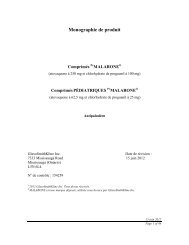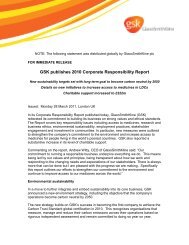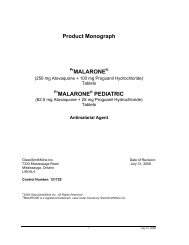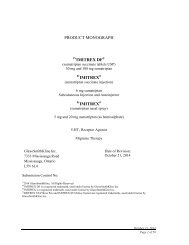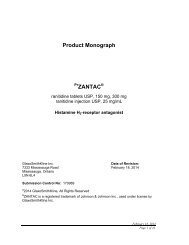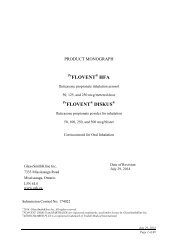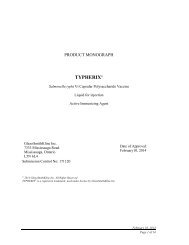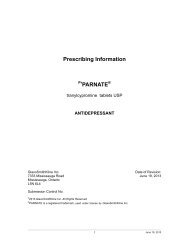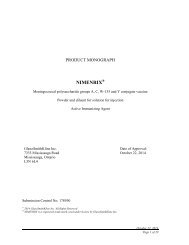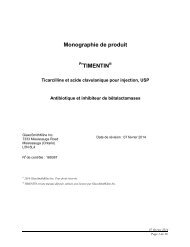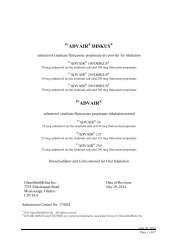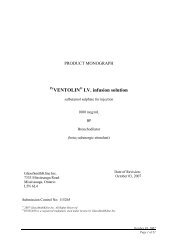Ventolin, Respirator Solution, Nebules - GlaxoSmithKline
Ventolin, Respirator Solution, Nebules - GlaxoSmithKline
Ventolin, Respirator Solution, Nebules - GlaxoSmithKline
Create successful ePaper yourself
Turn your PDF publications into a flip-book with our unique Google optimized e-Paper software.
The rate of respiration in test animals initially increased, but subsequently becameabnormally slow and deep. Death, preceded by convulsions and cyanosis, usuallyoccurred within four hours after drug administration.Rabbits, cats and dogs survived a single dose of 50 mg/kg salbutamol.Intermediate (Four Months) ToxicityRats received salbutamol twice daily, in oral doses from 0.5 to 25 mg/kg, on anincreasing scale. The only significant hematological changes were a small increase inhemoglobin and packed cell volume. BUN and SGOT values were elevated while bloodglucose and plasma protein levels remained unchanged. Pituitaries had increased amountof PAS-positive material in the cleft at the higher dose levels.Salbutamol was given to dogs twice daily, in oral doses from 0.05 to 12.5 mg/kg, on anincreasing scale. The rate of increase of hemoglobin and packed cell volume wasdepressed, particularly at higher doses. Leukocyte count decreased after sixteen weeks oftreatment at each dose level. Platelet count was increased after eight weeks at the highestdose. No significant biochemical effects were observed. The only significant histologicalchange was the appearance of corpora amylacea in the stomach which was attributed toaltered mucus secretion. Inhalation of 1000 mcg of salbutamol aerosol twice daily forthree months did not produce any morphological changes in the lungs, trachea, lymphnodes, liver or heart.Long-Term ToxicityFifty female, Charles River CD Albino rats received salbutamol orally at 2, 10 and50 mg/kg/day for one hundred and four weeks; fifty female Charles River CD Sprague-Dawley-derived rats received 20 mg/kg/day salbutamol orally for fifty weeks, and fiftyfemale Charles River Long-Evans rats received 20 mg/kg/day salbutamol orally forninety-six weeks. These rat studies demonstrated a dose-related incidence of mesovarianleiomyomas. No similar tumors were seen in mice.MutagenicityIn vitro tests involving four micro-organisms revealed no mutagenic activity.CarcinogenicityIn a two-year study in the rat, salbutamol sulphate caused a significant dose-relatedincrease in the incidence of benign leiomyomas of the mesovarium at dosescorresponding to 111, 555, and 2,800 times the maximum human inhalation dose. Inanother study, the effect was blocked by the co-administration of propranolol. Therelevance of these findings to humans is not known. An 18-month study in mice and alifetime study in hamsters revealed no evidence of tumorigenicity.Teratogenicity StudiesSalbutamol has been shown to be teratogenic in mice when given in doses correspondingto 14 times the human aerosol dose; when given subcutaneously in doses correspondingOctober 2, 2014Page 21 of 37



